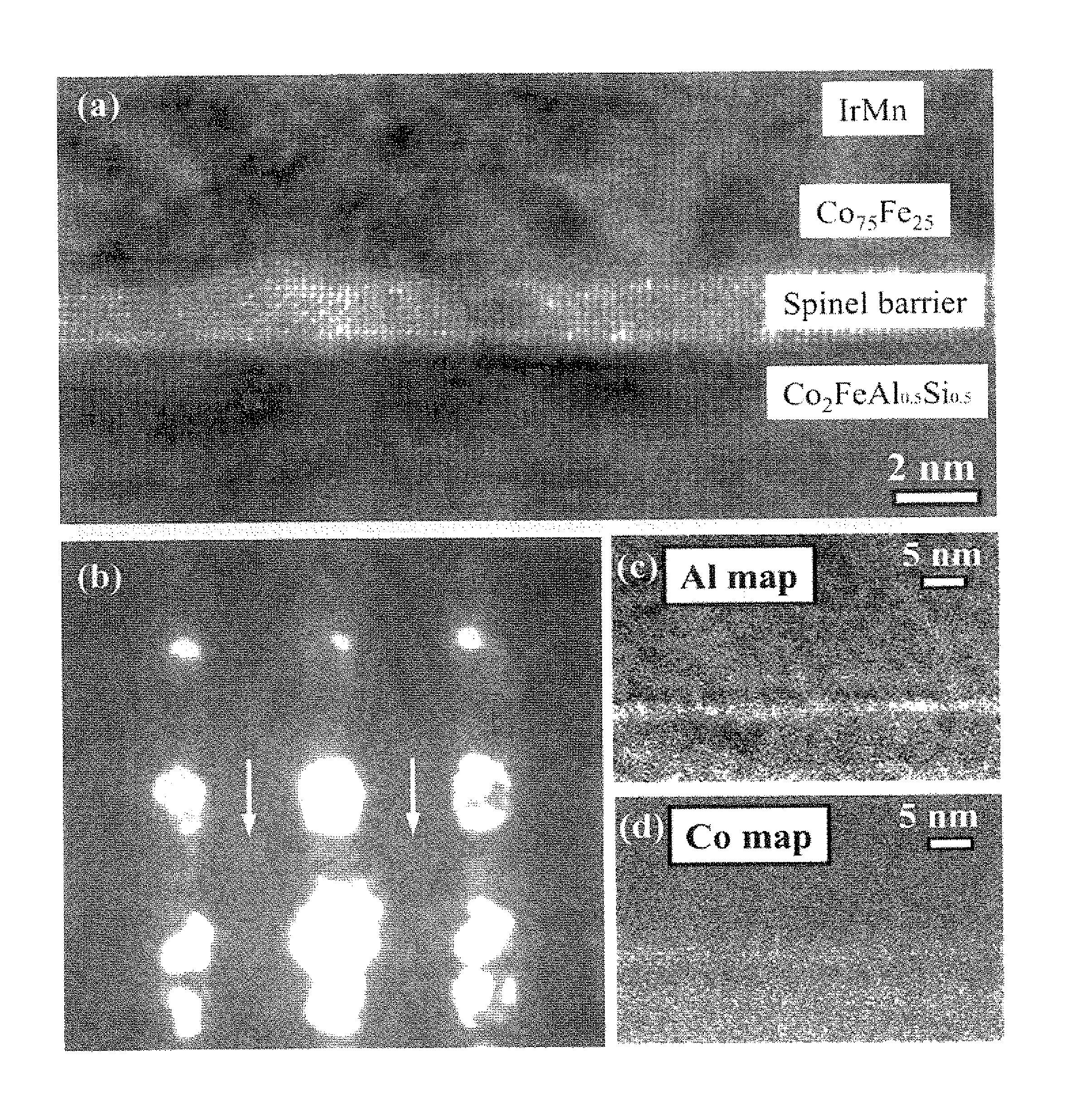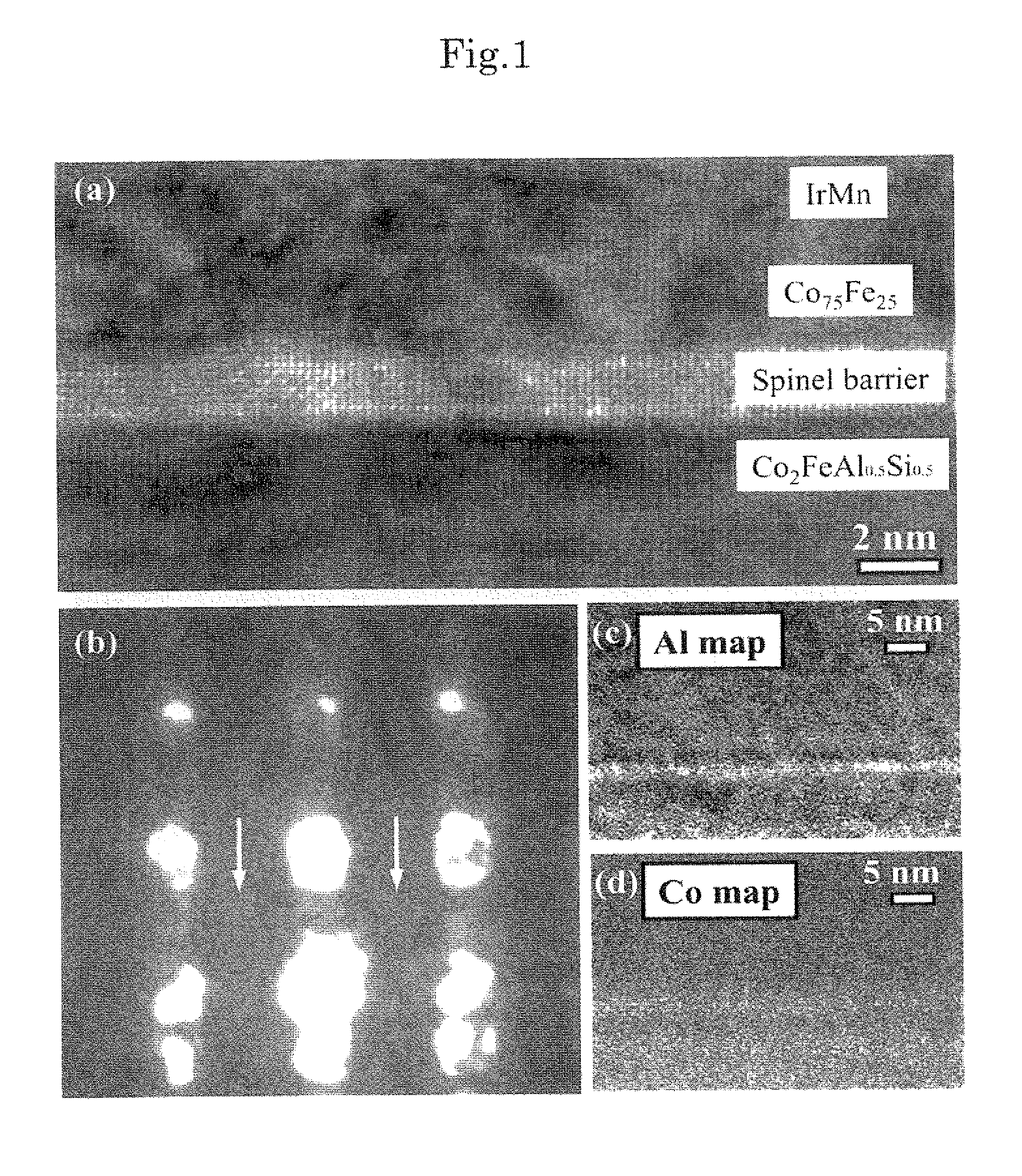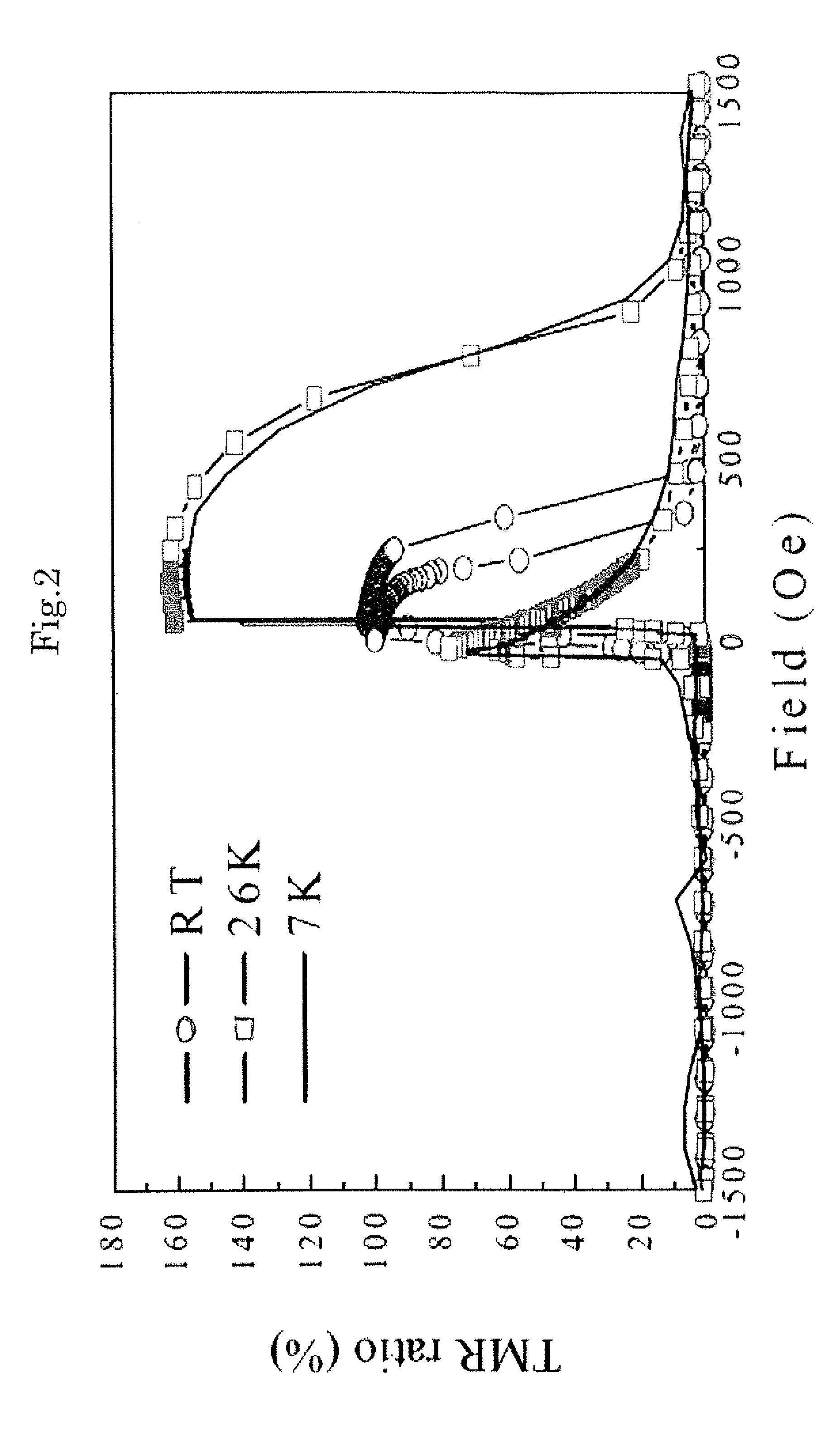Ferromagnetic tunnel junction structure, and magneto-resistive element and spintronics device each using same
a tunnel junction and magnetoresistive element technology, applied in the field of ferromagnetic tunnel junction structure, can solve the problems of difficult to obtain high-quality tunnel junctions, unsuitable alox amorphous barriers, uneven properties, etc., and achieves the effect of increasing tmr, ensuring high-quality tunnel junctions, and increasing quality
- Summary
- Abstract
- Description
- Claims
- Application Information
AI Technical Summary
Benefits of technology
Problems solved by technology
Method used
Image
Examples
example 1
[0051]Using a DC magnetron sputtering apparatus and using a Cr film as a buffer layer, a Cr (40 nm) / Co2FeAl0.5Si0.5 (80 nm) stacked film was formed on a MgO (001) substrate. Then, for improving the Co2FeAl0.5Si0.5 (CFAS) film in crystalline properties, the stacked film was subjected to heat treatment at a temperature of 430° C. for one hour. The X-ray diffraction has revealed that the CFAS in this state is of a B2 structure. Subsequently, Mg and Al targets were sputtered to form a Mg (0.7 nm) / Al (1.3 nm) stacked film, and the resultant substrate was transferred to an oxidation chamber. Ar and oxygen were introduced into the oxidation chamber and the stacked film was subjected to inductively coupled plasma (ICP) oxidation treatment to form a Mg—Al oxide film. In this instance, the Ar:oxygen partial pressure ratio was 3:17, and the oxidation time was 120 seconds.
[0052]The resultant stacked film was transferred again to the film formation chamber, and subsequently, a CoFe (3 nm) / IrMn (...
example 2
[0061]A tunnel junction element comprising Cr (40 nm) / CFAS (80 nm) / MgAl2O4 / CFAS (5 nm) / CoFe (3 nm) / IrMn (12 nm) / Ru (7 nm) was prepared using substantially the same method as in Example 1 except that the upper magnetic layer was CFAS instead of the CoFe alloy. The junction resistance RA was 2.2×104 Ωμm2, which was as small as a hundredth of that obtained when using an amorphous AlOx barrier, and the TMR was 240% at room temperature, which was larger than that obtained when using a CoFe alloy in the upper magnetic layer. This indicates that CFAS having a B2 structure is grown epitaxially on the MgAl2O4 barrier and the resultant CFAS has a spin polarization larger than that of CoFe.
example 3
[0062]A tunnel junction element comprising Cr (40 nm) / CoFe (80 nm) / MgAl2O4 / CFAS (5 nm) / CoFe (3 nm) / IrMn (12 nm) / Ru (7 nm) was prepared using substantially the same method as in Example 1 except that the lower magnetic layer was a CoFe alloy. The TMR at room temperature was 68%, which was equivalent to or more than that of the element using an amorphous AlOx barrier. On the other hand, the junction resistance RA was 1.1×104 Ωμm2, which was reduced to a hundredth of that of the element using an amorphous AlOx barrier. This indicates that the lattice misfit between the CoFe [110] and the MgAl2O4 [100] is as very small as 0.4% or less and a high-quality epitaxial film has been realized.
PUM
 Login to View More
Login to View More Abstract
Description
Claims
Application Information
 Login to View More
Login to View More - R&D
- Intellectual Property
- Life Sciences
- Materials
- Tech Scout
- Unparalleled Data Quality
- Higher Quality Content
- 60% Fewer Hallucinations
Browse by: Latest US Patents, China's latest patents, Technical Efficacy Thesaurus, Application Domain, Technology Topic, Popular Technical Reports.
© 2025 PatSnap. All rights reserved.Legal|Privacy policy|Modern Slavery Act Transparency Statement|Sitemap|About US| Contact US: help@patsnap.com



